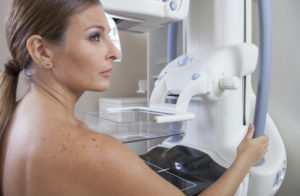Imaging of the Lower GI
 You would probably not consider a barium enema an exam to add to your bucket list, but this imaging study of the colon has the potential to save lives and diagnose many different conditions of the large intestine. While not the most pleasant test we perform, it does create beautiful (ok – we think they’re beautiful!) images of the colon, allowing us to find problems and prevent future ones.
You would probably not consider a barium enema an exam to add to your bucket list, but this imaging study of the colon has the potential to save lives and diagnose many different conditions of the large intestine. While not the most pleasant test we perform, it does create beautiful (ok – we think they’re beautiful!) images of the colon, allowing us to find problems and prevent future ones.
So, why would you need an imaging study of the lower gastrointestinal (lower GI) tract?
A barium enema shows the anatomy of the large intestine or colon. Colonoscopy allows direct visualization of the mucosal lining and the inside of your colon through a long endoscope, and is often the first study performed for evaluation of the colon. Barium enema is an alternative means of imaging the colon that is less invasive, but not as sensitive at finding some things (especially smaller polyps). Your doctor may recommend lower GI imaging if you have the following symptoms:
- blood in stools
- change in bowel habits
- constipation
- excessive or chronic diarrhea
- inexplicable weight loss
- irritable bowel syndrome (IBS)
- pain in the abdominal region
- to screen for colon cancer – colonoscopy or CT colonography are often the studies of choice; if colonoscopy cannot reach all of the colon, barium enema may be used to screen the part of the colon not seen; screening for colon cancer is important as most colon cancers start as small growths called polyps – if such polyps are removed, no cancer will develop!
How do you prepare for lower GI imaging? What’s to expect?
Tests of the lower GI are performed… carefully. In order to find masses or abnormalities of the mucosal lining, the colon must be completely empty. A preliminary prep to accomplish this is necessary for most studies. It will require fasting for a time period, around 24 hours. The prep will include a combination of laxatives and enemas with the goal that all particulate matter is eliminated from your system by the morning of the test. Any medications necessary should be taken with a small amount of water.
We occasionally do the study on children. Special preparations may or may not be necessary depending on the age of the child and the conditions being evaluated. The test involves radiation, so will not be used on pregnant women or those who might be pregnant. Let your radiologist know if you have an allergy to latex.
We will start the procedure with a preliminary x-ray or film of your abdomen. This allows the radiologist to make sure the prep has worked and the colon is empty. It also allows us to assess for signs the test should not be done, such as when there is a possible obstruction or bowel perforation. The exam involves placing a catheter into the rectum, where a small balloon is inflated. Barium is introduced through the catheter into the rectum by gravity. Room air is then introduced. We use fluoroscopy to get the right amount of barium and air into and coating the colon. This will involve changing your position on the table (lots of rolling!) and changing the table position. Once the colon mucosa is coated with barium and distended with air, a series of x-rays in dedicated positions will be taken so that all parts of your colon will be seen.
It will help you tolerate the study if you concentrate on breathing – this actually relaxes the muscles in the wall of the colon, lessening any cramping you may experience. What do we look for when imaging the lower intestinal tract? We can find a wealth of information from the health of the mucosal lining to blockages. We will assess for normal anatomy and look for signs that all of your colon, from the rectum to the cecum, is seen. We can evaluate for:
- tumors – both benign polyps and cancers
- diverticular disease – diverticula are saccular outpouchings from the colon wall which can become inflamed
- inflammation as can be seen in inflammatory bowel disease or colitis
- strictures or narrowings
- blockages in children, as from Hirschsprung’s disease or from intussusception, which can also be treated and reduced with a barium enema
What happens after a lower GI exam? Your radiologist will review all of the films. Once all areas of the colon have been well-seen, the catheter will be removed and you will be allowed to the restroom. Images after using the restroom may or may not be needed. Your radiologist will evaluate all of your images and the final report will be sent to your referring physician.
Be sure to drink plenty of water following the procedure. This is needed to flush the remaining contrast agents from you system. You can resume your normal diet immediately.
The well-being of your gastrointestinal system is important, and the barium enema is an imaging tool which can provide valuable information, keeping you on the road to your best possible health.
Originally published 7/18/14 on diagnosticimagingcenterskc.com.





